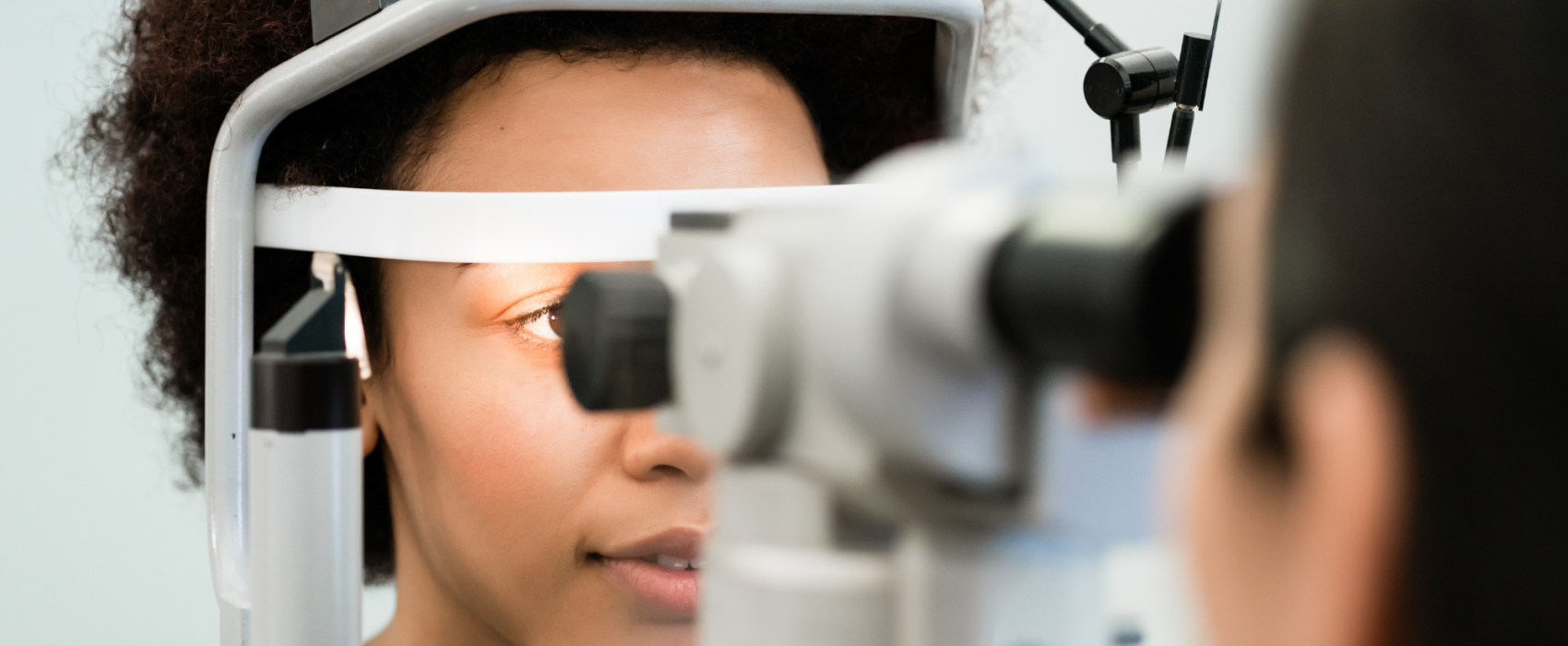Lessons from Case Studies
Whether working in front of a screen, using intricate tools or driving long distances, many employees unknowingly strain their eyes daily. Regular eye tests can prevent minor issues from becoming major problems, enhancing workplace safety, productivity and overall wellbeing.
This article explores the importance of eye tests through three fictional workplace scenarios: a screen-dominated office environment, a role involving tool usage and a profession that demands long hours of driving.
Case Study 1: A Screen-Dominated Work Environment
Role: Marketing Executive at a Digital Agency
Key Issue: Digital eye strain
Emma, a 34-year-old marketing executive at a busy digital agency, spends up to 8 hours a day staring at her computer screen. Between crafting campaigns, analysing data and attending virtual meetings, her workload often requires intense focus. Over time, Emma began experiencing persistent headaches, blurred vision and dry eyes. She initially dismissed these symptoms as ‘normal’ for her role but found her productivity slipping as the discomfort worsened.
When her employer introduced a workplace eye care programme, Emma took advantage of the free eye test. The optician diagnosed her with digital eye strain (DES) and recommended glasses to correct a small refractive error affecting her ability to focus at the distance of her screen. She was also advised to follow the 20-20-20 rule (looking away from the screen every 20 minutes at something 20 feet away for 20 seconds) and adjust her workstation lighting to reduce glare.
The results were immediate. With the right glasses and improved habits, Emma’s symptoms were significantly reduced and her productivity soared. Her employer also benefitted, as fewer employees reported similar issues after the eye care programme was introduced.
Case Study 2: A Role Involving Tool Usage
Role: Precision Engineer in a Manufacturing Plant
Key Issue: Blurred vision impacting work accuracy
James, 45, works as a precision engineer, crafting intricate components for medical equipment. His role demands acute attention to detail, as even the smallest error could compromise the quality of the final product. Over the years, James noticed he was struggling to focus on close-up tasks despite his prescription glasses, often misjudging measurements or needing to redo work. These issues were frustrating for James and costly for the company.
During his annual health check-up, his manager encouraged him to have an eye test, as it had been over five years since his last one. The optician discovered that James had developed presbyopia, a common condition that makes it more difficult to focus on close-up detail, for example when reading, due to age related changes in the flexibility of the lens and functioning of tiny muscles controlling its movement. With a new pair of prescription bifocal glasses, James quickly regained his precision and confidence.
Case Study 3: Long-Haul Driving
Role: Delivery Driver for a Logistics Company
Key Issue: Undiagnosed vision problem leading to safety risks
Sophie, 39, has been a delivery driver for over a decade, clocking up thousands of miles each month for a large logistics company. While she had always prided herself on her excellent driving record, she recently noticed difficulty seeing clearly in low-light conditions, particularly during early morning or late-night shifts. She also experienced occasional eye strain after long hours on the road but thought it was simply a sign of fatigue.
When Sophie mentioned her concerns to her GP, she was encouraged to schedule an eye test. The optician diagnosed her with mild astigmatism, a condition where the light-focusing parts of the eye (cornea or lens) have an irregular shape, resulting in blurred or distorted vision. Sophie’s new glasses corrected her astigmatism and allowed her to see clearly at distances, required for driving. Her optician confirmed that she met the DVLA visual standards required of her driving licence. She could see road signs and hazards more clearly, especially at night and felt far more confident behind the wheel.
The Key Takeaways
These three case studies demonstrate that no matter the role, regular eye tests are crucial for maintaining workplace performance and safety. By encouraging regular eye care, employers:
- Reduce the likelihood of accidents and errors.
- Enhance employee health and comfort, leading to improved morale and engagement.
- Stay compliant with legislation, such as UK driving law and the Health and Safety (Display Screen Equipment) Regulations 1992, which require employers to facilitate free eye tests for display screen users who are employees.

